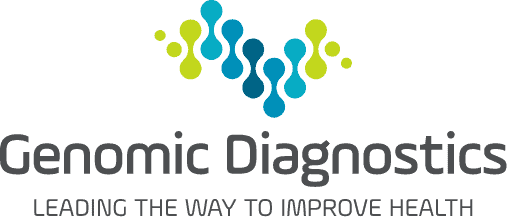Myelodysplastic Syndromes and Myeloid Neoplasms
Myelodysplastic syndromes (MDS) are clonal haematological disorders characterized by haematopoietic cell dysplasia, peripheral blood cytopenias, and a predisposition for developing acute myeloid leukaemia (AML). Genetic investigations for detection of chromosomal rearrangements (karyotyping and FISH) and somatic variants (NGS) are valuable for improving the diagnosis and management of patients with unexplained cytopenias. Somatic variants detected by NGS may further distinguish previously defined morphological MDS subtypes. Multiple pathogenic variants have been suggested to have independent prognostic value and may predict duration of response to current therapies.
| Test Name | BCR-ABL |
|---|---|
| Clinical Indication | Used in the differential diagnosis, monitoring, and for treatment selection in patients with laboratory evidence of certain types of leukaemia. |
| Gene(s) | BCR/ABL1 fusion |
| Method | Real-time PCR |
| Turn around time | 2 – 4 days |
| Medicare Eligibility | 73314 – criteria apply |
| Sample Type/ Collection Type | Blood 10mL EDTA tube or Bone Marrow 4mL EDTA tube |
| Special Instructions | Bone marrow and diagnostic specimens must be received by the laboratory within 48 hours of collection. No collections Friday. Specimens for monitoring purposes must be received in the laboratory within 72hrs from collection. Collection can occur any day. |
| Test Name | Nucleophosmin & FLT3 |
|---|---|
| Clinical Indication | For diagnosis, prognosis, and classification in acute myeloid leukaemia |
| Gene(s) | NPM1, FLT3 |
| Method | Real-time PCR analysis; Conventional PCR and capillary electrophoresis |
| Turn around time | 14 days |
| Medicare Eligibility | 73314 |
| Sample Type/ Collection Type | 6mL Blood EDTA tube or 1 mL bone marrow EDTA tube |
| Special Instructions | Test is performed on either peripheral blood or bone marrow aspirate. Peripheral blood can be collected by a collector, bone marrow aspirate (doctor collect only) must be placed into EDTA. |
| Test Name | Chromosomes Bone Marrow | Chromosomes Lymph Nodes | Chromosomes Unstimulated Blood |
|---|---|---|---|
| Clinical Indication | For diagnosis, classification, and prognosis in haem-oncology | ||
| Gene(s) | All chromosomes | ||
| Method | Conventional chromosome analysis | ||
| Turn Around Time | Urgent 2 days; Routine 22 days | 10 – 12 days | 18 days |
| Medicare Eligibility | 73290 | 73287 | 73290 |
| Sample Type | Bone marrow aspirate | Lymph node | Blood |
| Collection Type | 1mL in 1x lithium heparin tube | Sterile container of Antibiotic Transport Media. | 6mL in 1x lithium heparin tube and 6mL in 1x tube |
| Special Instructions | Doctor collect only. Add aspirate to a 2mL lithium heparin tube and mix gently. Transport cooled or at room temperature. | See important notes below*. | None |
*Doctor collect. Sample must be kept sterile and moist. DO NOT USE FORMALIN. USE ANTIBIOTIC TRANSPORT MEDIA available from the Histology Department of your local laboratory. For overnight transport cover large specimens with ANTIBIOTIC TRANSPORT MEDIA OR STERILE NORMAL SALINE and sent to your local laboratory IMMEDIATELY. Please indicate if specimen is to be shared with Histology.
| Test Name | Chromosomes Unstimulated Blood |
|---|---|
| Clinical Indication | For diagnosis, classification, and prognosis in haem-oncology |
| Gene(s) | All chromosomes |
| Method | Microarray analysis |
| Turn around time | 18 days |
| Medicare Eligibility | 73290 |
| Sample Type | Blood |
| Collection Type | 6mL 1x lithium heparin tube and 6mL 1x EDTA tube |
| Special Instructions | None |
| Test Name | FISH Haem-Oncology |
|---|---|
| Clinical Indication | For diagnosis, classification, and prognosis in haem-oncology |
| Gene(s) | See list of panels and individual targets below |
| Method | FISH |
| Turn around time | 2 – 14 days |
| Medicare Eligibility | 73314 – Criteria applies |
| Sample Type | Bone marrow Aspirate |
| Collection Type | Lithium heparin tube |
| Special Instructions | Doctor Collect. No additional sample required. Test is performed with Chromosome analysis. |
| AML Panel | PML/RARA; CBFB; Del5q; MLL; Del7q; IGH/MYC; Del 20q |
| Myelodysplastic syndrome | Del5q; del7q; IGH/MYC; MLL; ETV6; del 20q |
| ALL | IGH/MYC; BCR/ABL1; MLL; ETV6; IGH/FGFR3; CEP9; CEP 10; TP53; E2A/PBX1 |
| Chronic Lymphocytic Leukemia | IGH/CCND1; ATM; CEP12; del 13q14; TP53; MYB; RB1 |
| Multiple Myeloma | 1pq; IGH/CCND1; IGH BA; del 13q14; TP53; IGH/FGFR3; IGH/MAF; IGH/MAFB; IGH/CCND3 |
| Lymphoma | BCL6; IGH/MYC; IGH/CCND1; BIRC3/MALT1; RB1; del 13q14 |
| Syndrome/Indication | Chromosome location | |
| Acute myeloid leukemia | AML/ETO | t(8;21)(q22,q22) |
| Acute myeloid leukemia | CBFB | inv(16)(p12;q22) |
| Acute promyelocytic leukemia | PML/RARA | (15;17)(q22;q21.1) |
| B lymphocytic leukemia/lymphoma | 1:19 rearrangements | 1:19 rearrangements |
| B-cell disorders | IGH | 14q32 |
| B-cell leukemias | MLL | 11q23 |
| B-Cell lymphomas | MYC | 8q24 |
| B-Cell lymphomas | BIRC3/MALT | t(11:18)(q21;q21) |
| B-Cell lymphomas | IGK | 2p11.2 |
| B-Cell lymphomas | IGL | 22p11.2 |
| Burkitt’s Lymphoma/ -like Leukemia | IGH/MYC/CEP8 | t(8;14)(q23;q32) |
| Chronic lymphocytic leukemia | ATM | 11q23 |
| Chronic lymphocytic leukemia | BCL3 | 19q13.32 |
| Chronic lymphocytic leukemia | Trisomy 12 | centromere |
| Chronic lymphocytic leukemia | MYB | 6q23 |
| Chronic lymphocytic leukemia/Myeloma | 13q deletion | 13q14.3 |
| Chronic lymphocytic leukemia/Myeloma | TP53 deletion | 17p13 |
| Chronic lymphocytic leukemia/Myeloma | RB1 | 13q14.3 |
| Chronic myelomonocytic leukemia | PDGFRB BA | 5q32 |
| Follicular lymphoma | IGH/BCL2 | t(14;18)(q32;21) |
| Leukemia | BCR/ABL | t(9;22)(q34;q11.2) |
| Leukemias including treatment related | Trisomy/monosomy 7 | centromere |
| Mantle cell lymphoma/CLL | IGH/CCND1-XT | t(11;14)(q13;q32) |
| Multiple myeloma | 1pq (CKS1B/CDKN2) amplification/deletion | 1q21/1p32.3 |
| Multiple myeloma | IGH/CCND3 | t(6;14)(p21;q32.2) |
| Multiple myeloma | IGH/FGFR3 | t(4;14)(p16.3;q32) |
| Multiple myeloma | IGH/MAF translocation | t(14;16) |
| Multiple myeloma | IGH/MAFB translocation | t(14;20) |
| Multiple myeloma | IRF4 | 6p25.3 |
| Myelodysplastic syndromes | ETV6 | 12p13 |
| Myeloid and lymphatic leukemias | 1pq | 1p36/1q25 |
| Myeloid and lymphatic leukemias | Trisomy 9 | centromere |
| Myeloid and lymphoid neoplasms | FIP1L1/PDGFRA: CHIC2- deletion | 4q12 |
| Myeloid leukemias | EVI1 | 3q26.2 |
| Myeloid neoplasms | 5q deletion (5q- syndrome) | 5q31.2 |
| Myeloid neoplasms | 7q deletion | 7q22/7q31 |
| Myeloproliferative disorders | FGFR1 | 8p12 |
| Myeloproliferative disorders/Myeloid neoplasms | 20q deletion | 20q12 |
| Non-Hodgkin lymphomas | BCL6 | 3q26 |
| Non-Hodgkin lymphomas | IGH/MALT1 | t(14;18)(q32;q21) |
| Non-Hodgkin lymphomas | PAX 5 | 9p12 |
| T cell leukemias | TCL1 breakapart | 14q32.13 |
This panel offers comprehensive testing for genomic variants that can provide diagnostic and prognostic information for patients with myeloid neoplasms and myelodysplastic syndromes. It is based on international guidelines and best practices. If required, customisation to suit individual patient needs can be offered.
| Test Name | Myeloid 63 gene panel |
|---|---|
| Clinical Indication | For diagnostic/prognostic work-up of AML/MDS. |
| Genes (63) | ABL1, ANKRD26, ARID1A, ASXL1, BCOR, BCORL1, BRAF, CALR, CBL, CEBPA, CREBBP, CSF3R, CUX1, CXCR4, DDX41, DNMT3A, ETNK1, ETV6, EZH2, FLT3, GATA1, GATA2, GNAS, HRAS, IDH1, IDH2, IKZF1, JAK2, JAK3, KDM6A, KIT, KMT2A, KRAS, MPL, MYD88, NF1, NOTCH1, NPM1, NRAS, PDGFRA, PHF6, PIM1, PPM1D, PTEN, PTPN11, RAD21, RHOA, RUNX1, SETBP1, SF3B1, SH2B3, SMC1A, SMC3, SRSF2, STAG2, STAT3, STAT5B, STAT6, TET2, TP53, U2AF1, WT1 and ZRSR2 |
| Method | Next generation sequencing |
| Turn around time | 4 weeks |
| Medicare Eligibility | 73447 |
| Sample Type/ Collection Type | Blood 4mL EDTA tube or Bone Marrow 4mL EDTA tube |
| Special Instructions | Specialist/consultant physician request only |
This panel combines genes from both Myeloid and Lymphoid Gene Panels, recognising that some haematological disorders require additional genes for their workup, classification and prognostication.
| Test Name | PAN Haem 96 gene panel |
|---|---|
| Clinical Indication | For extended assessment of myeloid/lymphoid disorders. |
| Genes (96) | ABL1, ANKRD26, ARID1A, ASXL1, ATM, B2M, BCL2, BCOR, BCORL1, BIRC3, BRAF, BTK, CALR, CARD11, CBL, CCND1, CD79B, CEBPA, CREBBP, CRLF2, CSF3R, CUX1, CXCR4, DDX41, DNMT3A, EP300, ETNK1, ETV6, EZH2, FBXW7, FLT3, FOXO1, GATA1, GATA2, GNA13, GNAS, HRAS, ID3, IDH1, IDH2, IKZF1, IL7R, JAK1, JAK2, JAK3, KDM6A, KIT, KLF2, KMT2A, KMT2D, KRAS, MAP2K1, MEF2B, MPL, MYC, MYD88, NF1, NFKBIE, NOTCH1, NOTCH2, NPM1, NRAS, PAX5, PDGFRA, PHF6, PIM1, PLCG2, POT1, PPM1D, PRDM1, PTEN, PTPN11, RAD21, RHOA, RUNX1, SETBP1, SETD2, SF3B1, SH2B3, SMC1A, SMC3, SOCS1, SRSF2, STAG2, STAT3, STAT5B, STAT6, TCF3, TET2, TNFAIP3, TNFRSF14, TP53, U2AF1, WT1, XPO1 and ZRSR2 |
| Method | Next generation sequencing |
| Turn around time | 3 – 4 weeks |
| Medicare Eligibility | 73447 (Myeloid) or 73448 (Lymphoid) |
| Sample Type/ Collection Type | Blood 4mL EDTA tube of Bone Marrow 4mL EDTA tube |
| Special Instructions | Specialist/consultant physician request only |
All coding exons | ARID1A, ATM, B2M, BCL2, BCOR, BCORL1, CARD11, CEBPA, CREBBP, CSF3R, CUX1, CXCR4, DDX41, DNMT3A, EP300, ETV6, EZH2, FBXW7, FOXO1, GATA2, GNA13, ID3, IDH1, IDH2, IKZF1, IL7R, JAK1, JAK2, JAK3, KDM6A, KLF2, KMT2A, KMT2D, KRAS, MAP2K1, MPL, MYC, NF1, NFKBIE, NOTCH2, NRAS, PAX5, PDGFRA, PHF6, PIM1, POT1, PPM1D, PRDM1, PTEN, RAD21, RUNX1, SETD2, SH2B3, SMC1A, SOCS1, STAG2, STAT3, TCF3, TET2, TNFAIP3, TNFRSF14, TP53, ZRSR2. |
Targeted coverage | ABL1 (exons 4-10), ANKRD26 (exons 1-4), ASXL1 (exons 10,12-13), BIRC3 (exons 6-9), BRAF (exon 15), BTK (exons 10-19), CALR (exon 9), CBL (exons 8-9), CCDN1 (exon 1), CD79B (exons 5-6), CRLF2 (exon 6), ETNK1 (exon 3), FLT3 (exons 11,13-17,20), GATA1 (exons 2-4), GNAS (exons 8-9), HRAS (exons 2-3), KIT (exons 2,8-11,13,17-18), MEF2B (exons 2-3), MYD88 (exons 3-5), NOTCH1 (exons 26-28, 34), NPM1 (exons 10-11), PLCG2 (exons 18-33), PTPN11 (exons 3,7-13), RHOA (exon 2), SETBP1 (exon 4), SF3B1 (exons 10-16), SMC3 (exons 10,13,19,23,25,28), SRSF2 (exon 1), STAT5B (exons 14-17), STAT6 (exons 8-18), U2AF1 (exons 2,6), WT1 (exons 7,9), XPO1 (exons 15-16). |
Exons described as per the MANE select reference transcript. | |
All ROI include 5 bases into flanking introns. | |
Leading the way to improved health
results in the shortest turnaround time.



